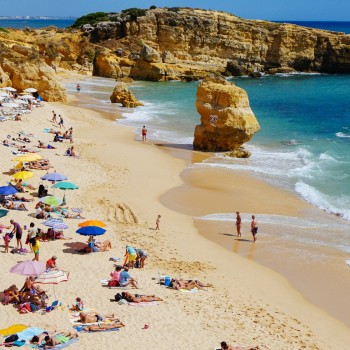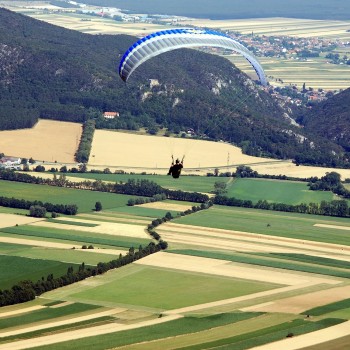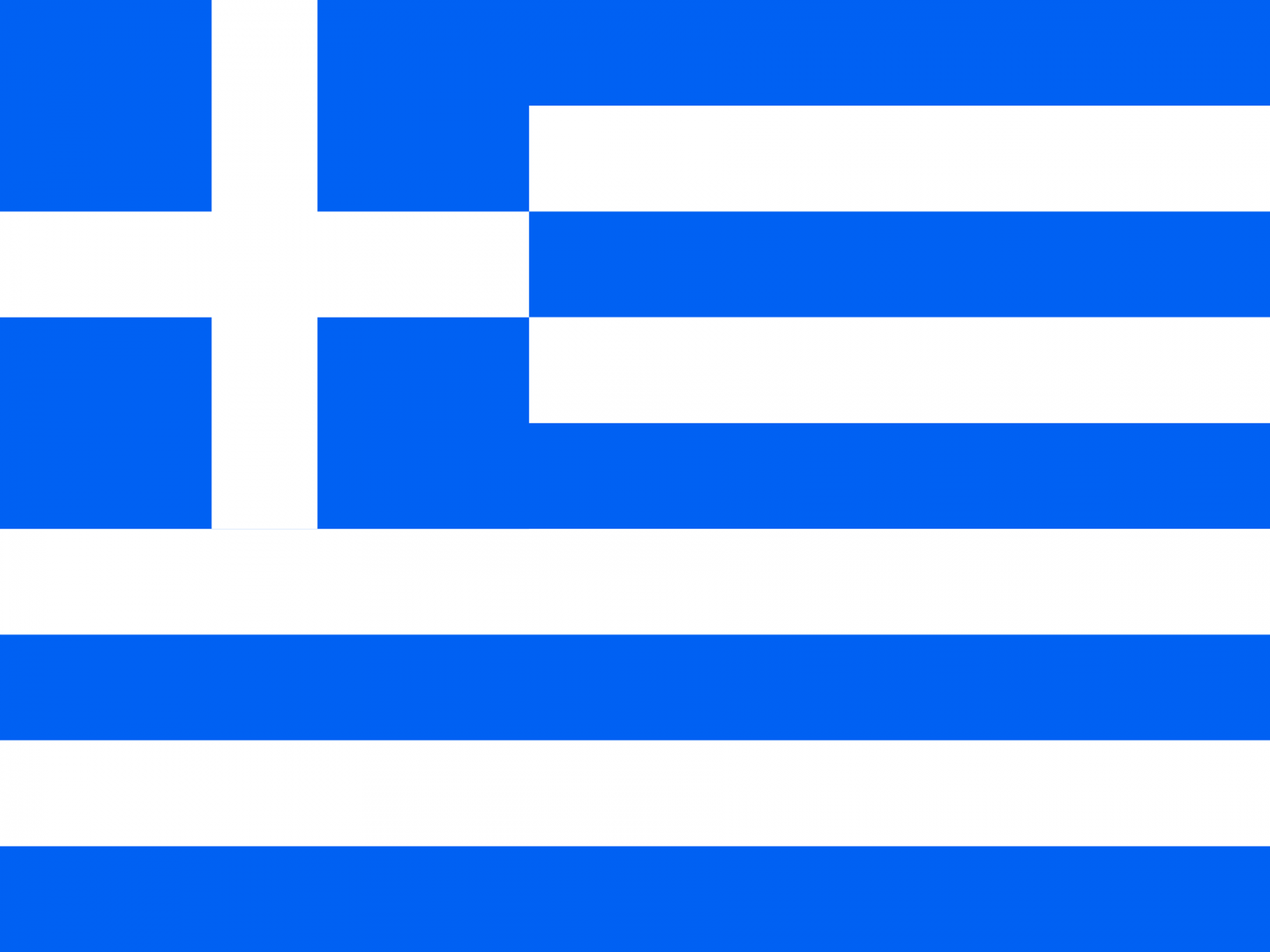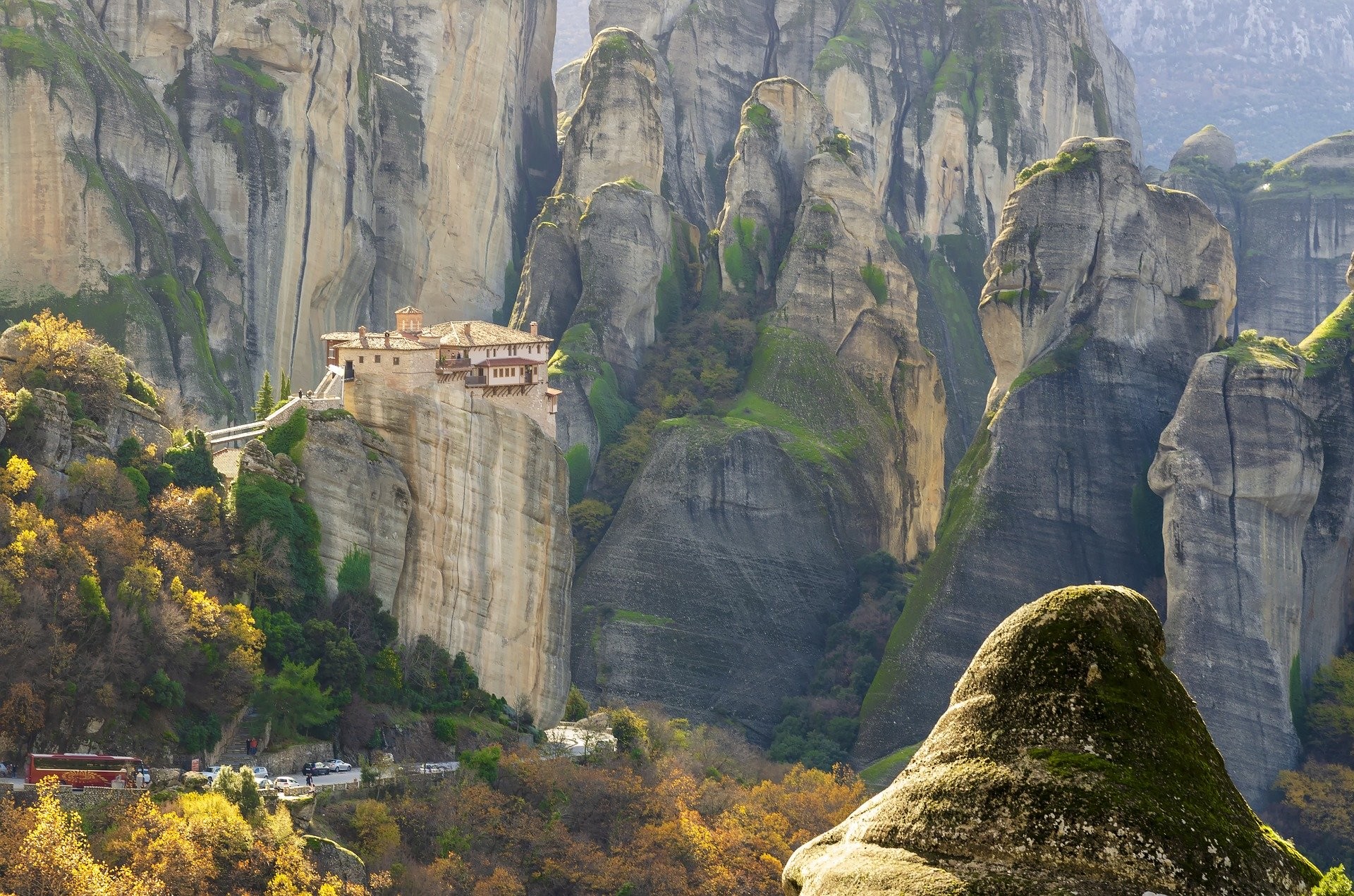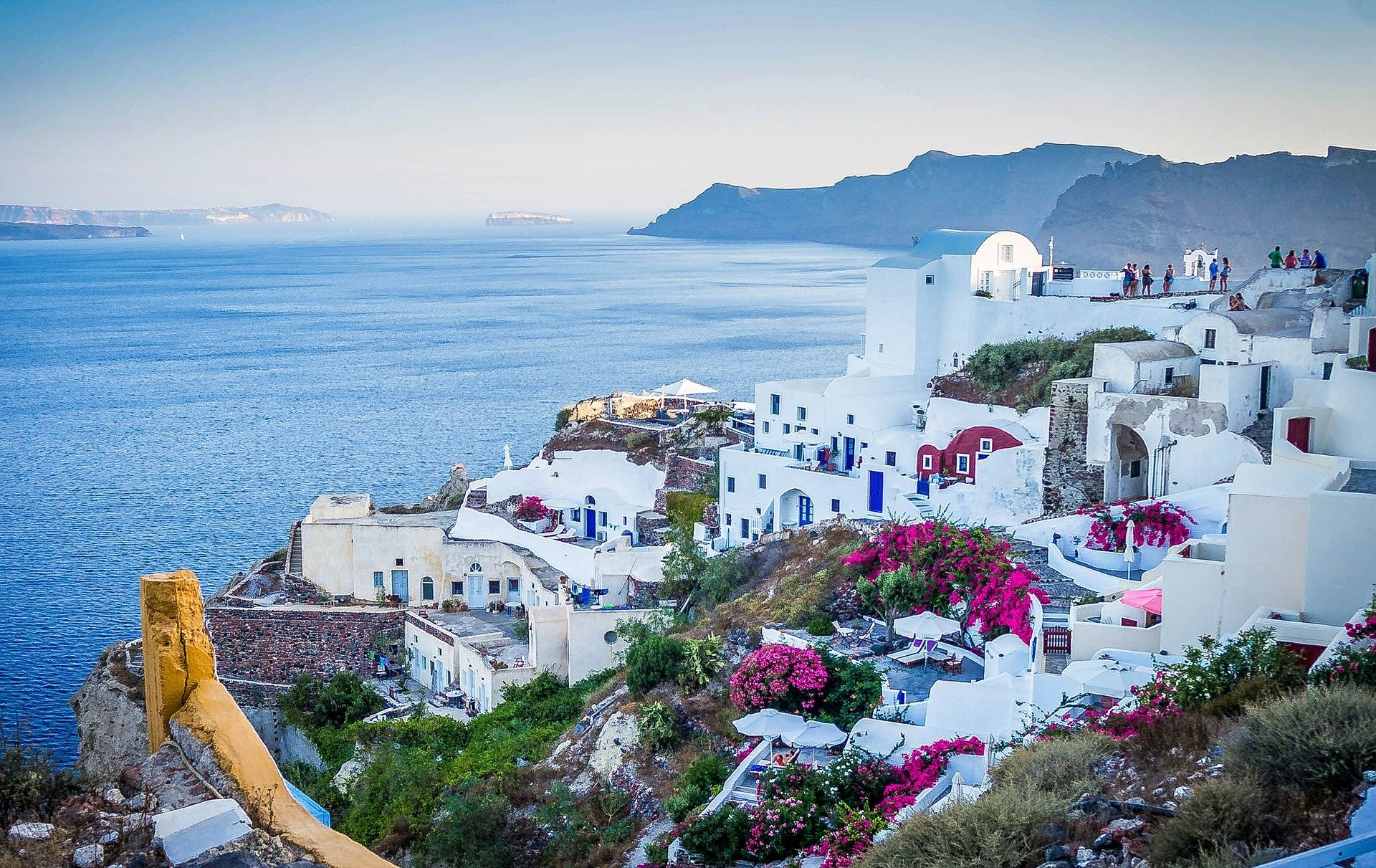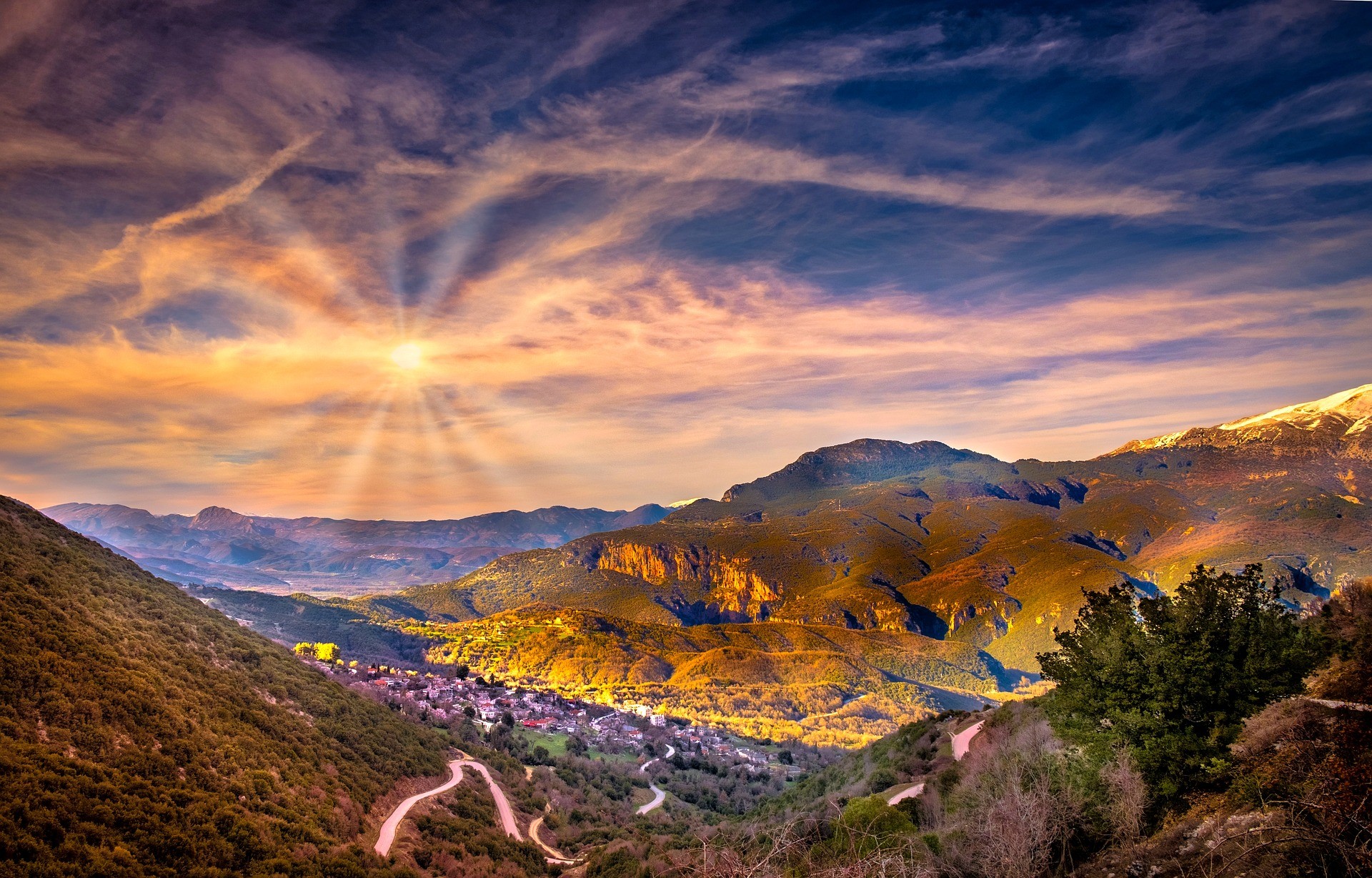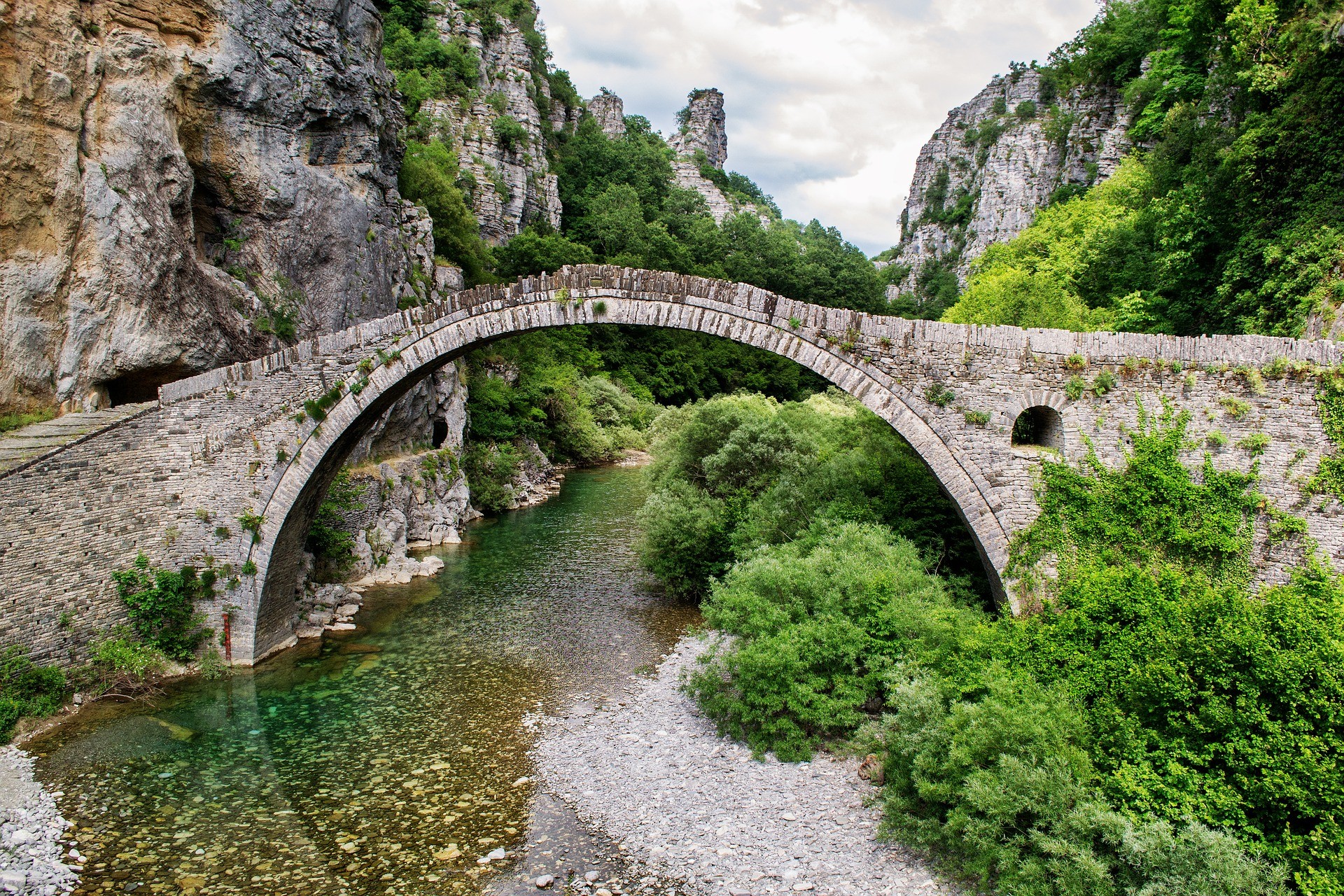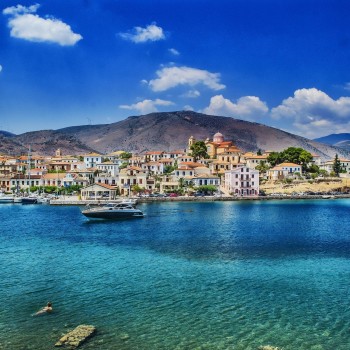Greece
Greece
Capital city description
One of the oldest cities globally with over 3400 years of history, Athens is Greece's capital and largest city. Athens has 2,929 square kilometers of land, and it serves as the most important industrial, political, cultural, and economic center in the country. Athens is home to two UNESCO World Heritage Sites, the Acropolis of Athens and the medieval Daphni Monastery.
Athens is also home to several museums and cultural institutions, such as the National Archeological Museum, featuring the world's most extensive collection of ancient Greek antiquities, the Acropolis Museum, the Museum of Cycladic Art, the Benaki, and the Byzantine and Christian Museum.
Climate
The climate of Greece is the Mediterranean on coasts and islands, with mild, rainy winters and hot, sunny summers. The northern cities, located in the inland areas of Epirus, Macedonia, and Thessaly, have a slightly continental climate, with relatively cold winters.
Air masses coming from the north can sometimes bring snow, frost, and hot summers, sometimes scorching. Finally, winters are cold and snowy in the northern mountainous areas, while summers are mild, with possible afternoon thunderstorms.
- Spring: March to May
- Summer: June to August
- Autumn: September to November
- Winter: December to February
Languages spoken
The official and primary language of Greece and spoken by most of the country's population is Greek. English is the prevalent foreign language spoken in Greece's business world and taught in schools.
Fun/Fascinating Facts
- Greece is the third biggest producer of olives globally. The cultivation of olive trees in the country began in ancient times. Indeed, some olive trees are known to have been planted in the thirteenth century still produce fruit.
- Greece has more archaeological museums than any other country in the world.
- Surprisingly, there are 18 different UNESCO World Heritage Sites in the country, including the Acropolis, Mount Athos, the Medieval City of Rhodes, and the Old Town in Corfu. Fourteen more sites are still pending consideration for becoming a World Heritage site.
- Greece is among the sunniest countries on Earth, enjoying about 300 days of sunshine every year.
- There are about 2,000 islands and islets in Greece, but only 170 are inhabited. The largest, Crete, has an area of 8,260 square kilometers (3,189 square miles).
Unique Customs/Traditions
- In Greece, name days are more meaningful than birthdays. A significant tradition is that everyone who has a name coming from a saint celebrated by the church celebrates his name on a given day of the year. On the "name day" of someone, his friends and family visit him without invitation and offer wishes and small presents. The house hostess offers pastries, sweets and hors d'oeuvres to the guests.
- Crucial to Greek culture, the first day of the month symbolizes a new beginning. Greeks greet each other "Kalo Mina," meaning good month, to wish good things for the month ahead.
- In Greek, it is typical to spit when someone mentions a lousy piece of news or death, when someone comments on the beauty or health of someone, or even when complimenting a baby or a child so that the comment doesn't give the person the evil eye. It is believed that spitting chases the devil and the misfortune away. The others spit three times when someone talks terrible news, saying ftou, ftou, ftou.
- Traditionally, Greeks didn't decorate with a Christmas tree but a Christmas boat. As a symbol of the maritime nation, the boat was decorated in honor of the sailors returning home to their families around Christmas time. In 1833, when Bavarian King Otto celebrated his first Christmas on the throne of Greece, the Christmas tree tradition was introduced to the country.
Popular universities
| Name | Description | |
|---|---|---|
| National and Kapodistrian University of Athens | The National and Kapodistrian University of Athens is a non-profit public higher education institution located in the urban setting of Athens, Attica, established in 1837. The National and Kapodistrian University of Athens is the largest public institution of higher education in Greece and among the largest universities in Europe. It is a legal entity of public law with 32 Faculties and 111 Postgraduate programs of all disciplines, 158 Laboratories, 69 Clinics (included in 4 University Hospitals), 6 Central Libraries, a Modern Greek Language Teaching Center, a Center of Foreign Languages, among others. | |
| Aristotle University of Thessaloniki | The Aristotle University of Thessaloniki is a non-profit public higher education institution located in the urban setting of Thessaloniki Central Macedonia, founded in 1925. The Aristotle University of Thessaloniki is the largest in Greece. It comprises ten faculties which consist of 40 schools and one single-school Faculty. The main campus is located in the center of Thessaloniki and covers an area of about 33.4 hectares. | |
| National Technical University | Founded in 1837, the National Technical University (NTUA) is the oldest and most prestigious educational institution of Greece in the field of technology. It offers courses and programs leading to officially recognized higher education degrees such as bachelor's degrees in several areas of study. | |
| University of Patras | The University of Patras is a non-profit public higher education institution located in the suburban setting of the small city of Patras, Western Greece, established in 1964. The University of Patras is the third largest University in Greece regarding students, faculty members, administrative personnel, departments, and degrees. Besides its distinguished path in education, the University of Patras excels in various basic and applied research fields. The University of Patras has acquired international prominence in research areas such as Health, Environment, Biotechnology, Mechanics, Electronics, Informatics, and Basic Science. | |
| University of Crete | The University of Crete is a young and dynamic academic institution committed to excellence in research & teaching, established in 1973. It now has 17 Departments in 5 Faculties: Philosophy, Education, Social Sciences, Sciences & Engineering, and Medicine. The University offers over 36 Masters's programs in subjects ranging from Byzantine Studies to Molecular Biology and PhDs in all areas of the University's research expertise. | |
| University of the Aegean | The University of the Aegean is a public higher education institution in Greece, founded in 1984. It has 16 Departments in 5 Faculties: Philosophy, Education, Social Sciences, Sciences & Engineering, and Medicine. The University of the Aegean is average in size with a capacity of 15 thousand students. The university participates in various international exchange programs between students and academic staff. Foreign citizens can also apply to the university. | |
| University of Thessaly | The University of Thessaly is a non-profit public higher education institution located in the small city of Volos Thessaly, founded in 1984. It offers courses and programs leading to officially recognized higher education degrees such as bachelor's degrees in several areas of study. The university includes eight Faculties: Faculty of Agriculture Sciences, Faculty of Economics and Administrative Sciences, Faculty of Engineering, Faculty of Technology, Faculty of Humanities and Social Sciences, Faculty of Physical Education Sciences, Sports and Dietetics, Faculty of Health Sciences, Faculty of Science. | |
| Athens University of Economics and Business | Founded in 1920, Athens University of Economics and Business (AUEB) is the oldest educational institution in Greece in the fields of Economics and Business Administration, at both undergraduate and postgraduate levels. The university provides education at the undergraduate and postgraduate level, mainly in the areas of Economics, European and International Economics, Business Administration, Marketing, Accounting and Finance, Management, Technology, Informatics, Statistics, Decision Science. | |
| University of West Attica | The University of West Attica (UNIWA) is a non-profit public higher education institution in Athens, Greece, established in 2018. It was founded due to the merger of the Technological Educational Institute of Athens and the Piraeus University of Applied Sciences. Today it is the third-largest university in Greece. At the same time, it is considered the fastest-growing higher education institution in the country and one of the fastest-growing university institutions in all of southeastern Europe. Presently, the University of West Attica comprises 27 different departments organized into six schools, covering a wide range of disciplines. These include engineering, administrative, economic and social sciences, applied arts and culture, health sciences, public health, and food sciences. | |
| University of Ioannina | The University of Ioannina is a non-profit public higher education institution located in the urban setting of the small city of Ioannina, Epirus, founded in 1970. the University of Ioannina includes 15 academic Departments. Several organized postgraduate study programs that combine taught and research elements at the master and Doctoral level are offered. | |
Festivals & Events

Art-Athina
Date: June
Art-Athina is an annual international contemporary art fair launched in 1993 by the Hellenic Art Galleries Association. As one of the oldest contemporary art fairs in Europe, Greek and foreign art galleries' cultural institutions interact, showcase artists, and network, organized by the Greek Hellenic Art Galleries Association (PSAT).
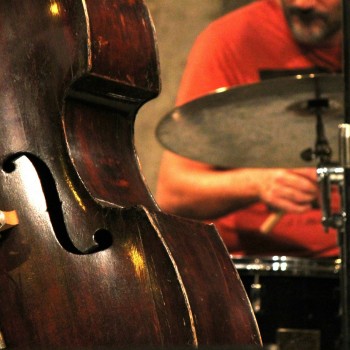
International Jazz and Blues Festival
Date: June
Athens's International Jazz and Blues Festival are held annually in June. Jazz artists worldwide are welcomed to present their works under the romantic summer moon, ensuring a romantic experience on top of the city.
It takes place at the lovely theatre of Lycabettus, on top of this historical hill with gorgeous views of Athens. Some events or concerts also occur in Technopolis Gaz, an old gas factory turned into a cultural venue.
.jpg)
Rockwave Festival
Date: June
One of the most famous rock music festivals held in Makasa, near Athens, the Rockwave Festival, is held every June for over three days.
The festival welcomes international and local bands and musicians, with concerts happening all day long, from morning till midnight.

Patras Carnival
Date: January
Patras Carnival is one of the biggest carnivals in Europe, held annually in Greece, begins on 17th January and finishes on 7th March. It is a celebration filled with color, music, dance, feasting, partying, drinking, and merrymaking.
There are many exciting activities and events such as colorful Parades, masquerade balls, street parties, a hidden treasure hunt, theatre, music performances, and even a children’s carnival. The Grand Parade is the main event and highlight of the Patras Carnival, as is the Treasure Hunt Game.
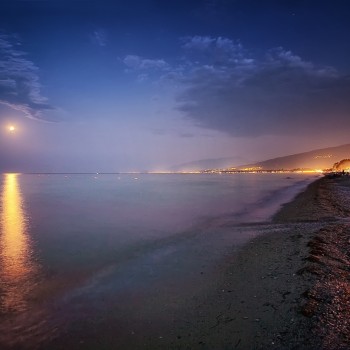
August Full Moon Festival
Date: August
Every year, Greece and Athens celebrate the full moon in August, the brightest and most impressive full moon of the year, with many exciting events.
Many monuments and sites remain open free of charge for longer. At the same time, other celebrations are also scheduled, such as free concerts in various museums of the city and other landmarks.

Kathara Deftera or Clean Monday
Date: March
Kathara Deftera or Clean Monday is a public holiday marking the end of the carnival period. Most Greeks will fly a kite on that day, and you are likely to see many of them if you go up Filopappou Hill.
Many unique dishes are prepared for the day, corresponding to the Greek Orthodox fasting tradition, basically a vegan diet with some seafood.

Orthodox Easter
Date: April ( varies)
Orthodox Easter is considered one of the most meaningful holidays in Greece. It commemorates the crucifixion and resurrection of Jesus Christ and celebrates with an entire week of festivities. The resurrection is proclaimed at midnight and celebrated with drums, fireworks, and church bells.
There are several customs on the week preceding Easter. The most picturesque is the Epitafios Procession on Friday evening and the Resurrection on midnight Saturday.
Attractions / Top Sights
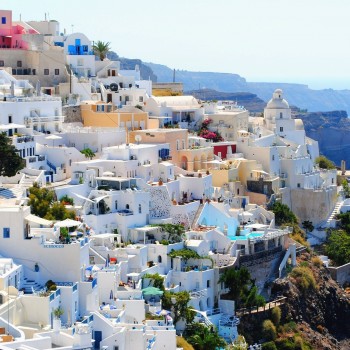
Santorini
When to visit: June to September
The enchanting island Santorini is famous for its picturesque views, stunning sunsets, whitewashed houses, and it is very own active volcano. It is best known for the west coast cliff-top towns of Fira and Oia, which appear to hang over a deep, blue sea-filled caldera.
Formed into typical Cycladic whitewashed cubic buildings, many converted into boutique hotels with infinity pools, Fira and Oia are considered romantic destinations, famous for weddings and honeymoons.
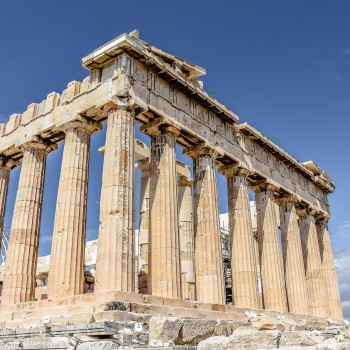
Acropolis
When to visit: Spring
One of the most famous Greece tourist attractions, and believed the remarkable symbol of Athens and Greece, the ancient Acropolis is a rocky mound rising in the heart of modern Athens, crowned by three magnificent temples dating from the 5th century BC.
On top of the Acropolis is the well-known and most distinctive fortress, Parthenon, originally made up of 58 columns supporting a roof and decorated by ornate pediments and a frieze. The construction of the Parthenon started in 447 BC, replacing an older temple that the Persians destroyed, and completed in 432 BC. During its long life, the Parthenon has served as a temple, fortress, church, mosque, and even powder magazine.
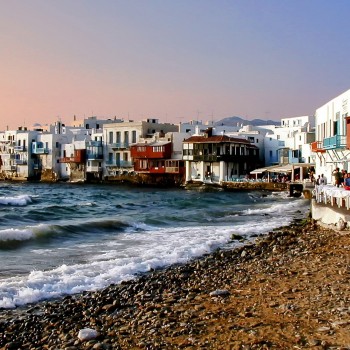
Mykonos
When to visit: June to September
Regarded as one of Greece's most glamorous islands destination, Mykonos. It is famed as a cosmopolitan destination amongst the Greek islands and is widely recognized as the best tourist attraction in Greece long before Santorini came into the picture.
Mykonos is famous for its numerous beautiful sandy beaches and narrow streets in the car-free old town. Mykonos Town (Chora) is a stunningly scenic Cycladic town with a maze of tiny streets and whitewashed steps lanes.

Acropolis Museum
When to visit: Spring
Designed by Swiss architect Bernard Tschumi, the Acropolis Museum is Athens' favorite tourist attraction. Formed in ultra-modern glass and steel structure with light and airy exhibition spaces, built specifically to display ancient finds from the Acropolis.
From the museum's cafe-restaurant terrace, you can enjoy the fantastic exhibits of the Acropolis itself. Exhibitions include the Caryatids and other statues, sanctuaries, everyday items used by ancient Athenians, and many other artifacts. The most significant things to see here include the 6th-century-BC Moschophoros, a statue of a young man carrying a calf on his shoulders, the Caryatids, sculptures of female figures that held up the Erechtheion, and the highly controversial Parthenon marbles.
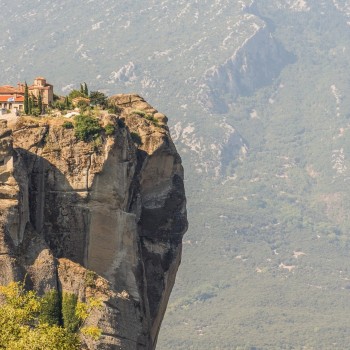
Metéora
When to visit: March to May or September to November
A breathtaking rock formation in Central Greece, also known as Metéora, is located near the town of Kalabaka. It houses six spectacular monasteries situated on several rock pillars. The rock formations have always been a site of worship for the ancient people of the area.
The first monastery in Metéora was founded in the 14th century. Access to the monasteries was deliberately difficult, requiring either long ladders or large nets to haul both goods and people. In 1988, Meteora was included on the UNESCO World Heritage List.

Delphi
When to visit: April to June or September to November
A UNESCO World Heritage site, Delphi was a sacred place to the ancients, who came here on pilgrimages to worship Apollo and ask advice from the mythical Oracle. It lies 180 kilometers northwest of Athens. It comprises the crumbling ruins of numerous temples, a theater, and a stadium, dating from the 8th century BC and the 2nd century AD.
The famous ancient theatre of Delphi was built on a hill giving spectators a view of the entire sanctuary and the spectacular landscape below. Nearby stands the Delphi Archaeological Museum, displaying an outstanding collection of finds from the site.
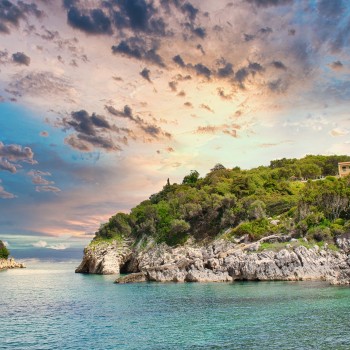
Corfu
When to visit: April to June or September to November
One of Greece's famous tourist destinations, a stunningly beautiful and romantic island of the Ionian island, Corfu, Greece, is surrounded by stunning beaches, upscale hotels, and restaurants. The Venetian rule's palaces, fortresses, and austere public buildings blend with drying washing lines in tiny alleyways and small secluded squares. A UNESCO world heritage site, Renaissance, Baroque and Classical "repertoire" came to be successfully applied to local artistic traditions.
The most famous beach area is Paleokastritsa, on the west coast, about 25-kilometers from Corfu Town. The island is lushly beautiful away from the main town, with rugged limestone rocks tumbling into the sea in its north and velvety green hills in its south.
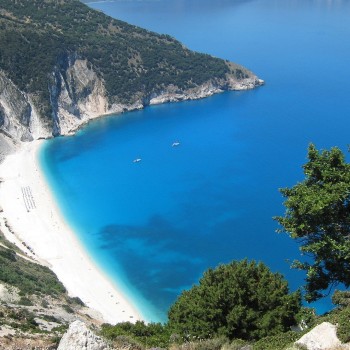
Myrtos Beach
When to visit: April to June or September to November
Undoubtedly one of the most picturesque beaches in Greece, with its "mile-and-a-half long arc of dazzling white pebbles, located in the northwest of Kefalonia, Myrtos Beach is world-famous for the pristine and magical colors of the water. The beach has a semi-circular shape surrounded by impressive white rocky cliffs with lush vegetation on top of them, creating a spectacular setting. The blue and turquoise colors of the sea contrast sharply with the glowing white of the smooth marble pebbles of the beach.
The beach is well-organized at the most part with beautiful umbrellas and sundecks, while a small portion remains completely unspoiled, ideal for total isolation. Myrtos has previously been voted 12 times as the best beach in Greece.

Rhodes Old Town
When to visit: February to June or September to November
The Island of the Knights, the largest Dodecanese island, lies on Rhodes's Aegean Sea. Historically, Rhodes island was very well-known worldwide for the Colossus of Rhodes, one of the Seven Wonders of the Ancient World.
The most significant monument of the island is the historical Rhodes Old Town. It is a Unesco World Heritage Site and one of the best-preserved medieval towns in Europe. It is surrounded by a unique fortification system, including monumental towers and gates built by the Knights of St. John after taking control of the island in the 14th century. Today, it is one of the most famous tourist destinations in Europe.

Samaria Gorge
When to visit: May to October
Located in southwest Crete, the beautiful 16 km (10 miles) long canyon Samaria Gorge. Samariá Gorge is famous for its incredibly stunning nature, waterfalls, lakes, ancient settlements, and unique flora and fauna.
It is one of the most fantastic destinations for hiking in Crete and attracts millions of visitors each year. The hike takes 4 to 7 hours, passes through forests of old cypresses and pines, then cuts between vertical cliffs through the mountains to emerge at Agia Roumeli on the Libyan sea.







